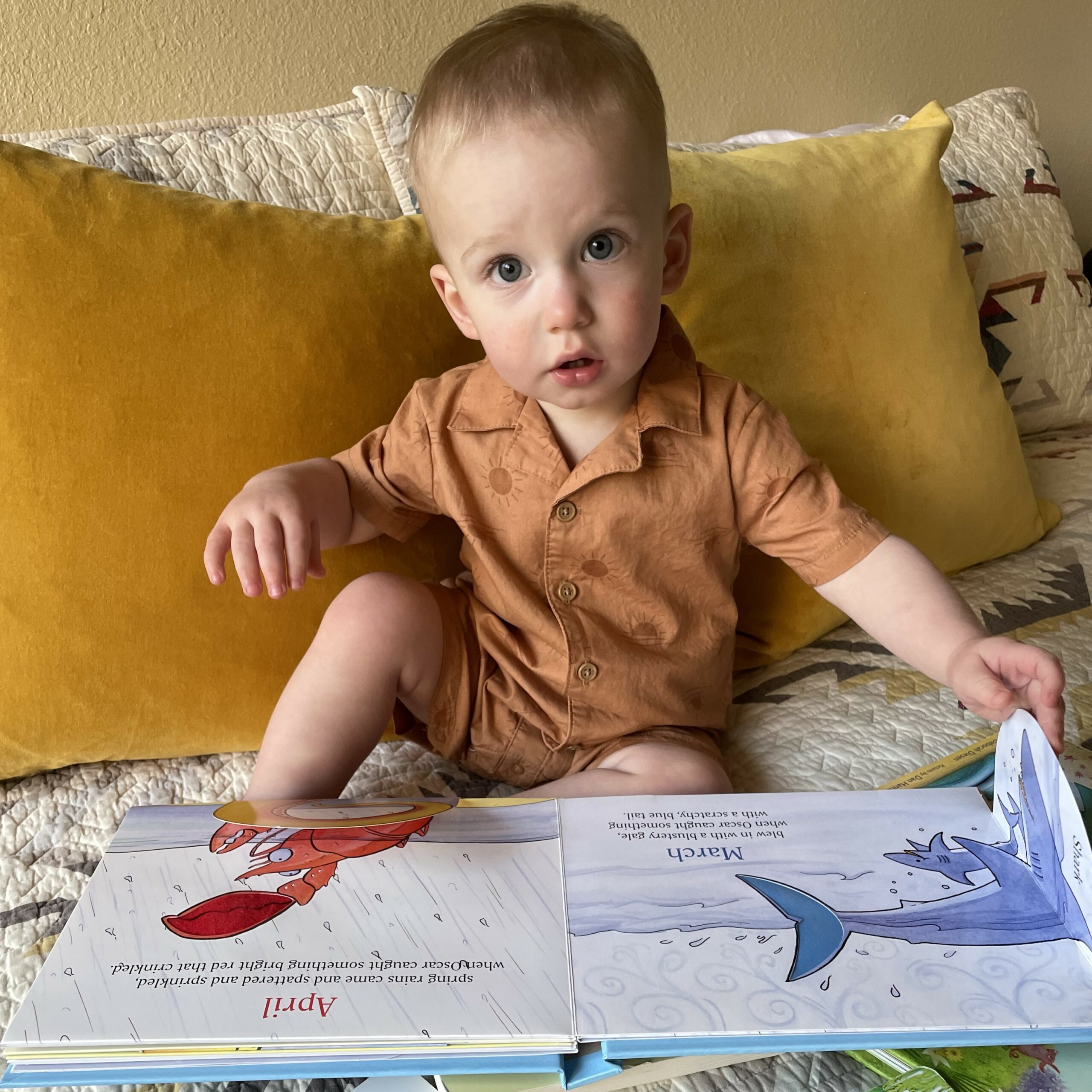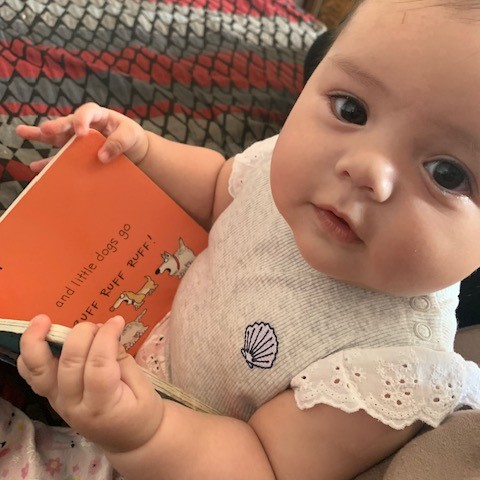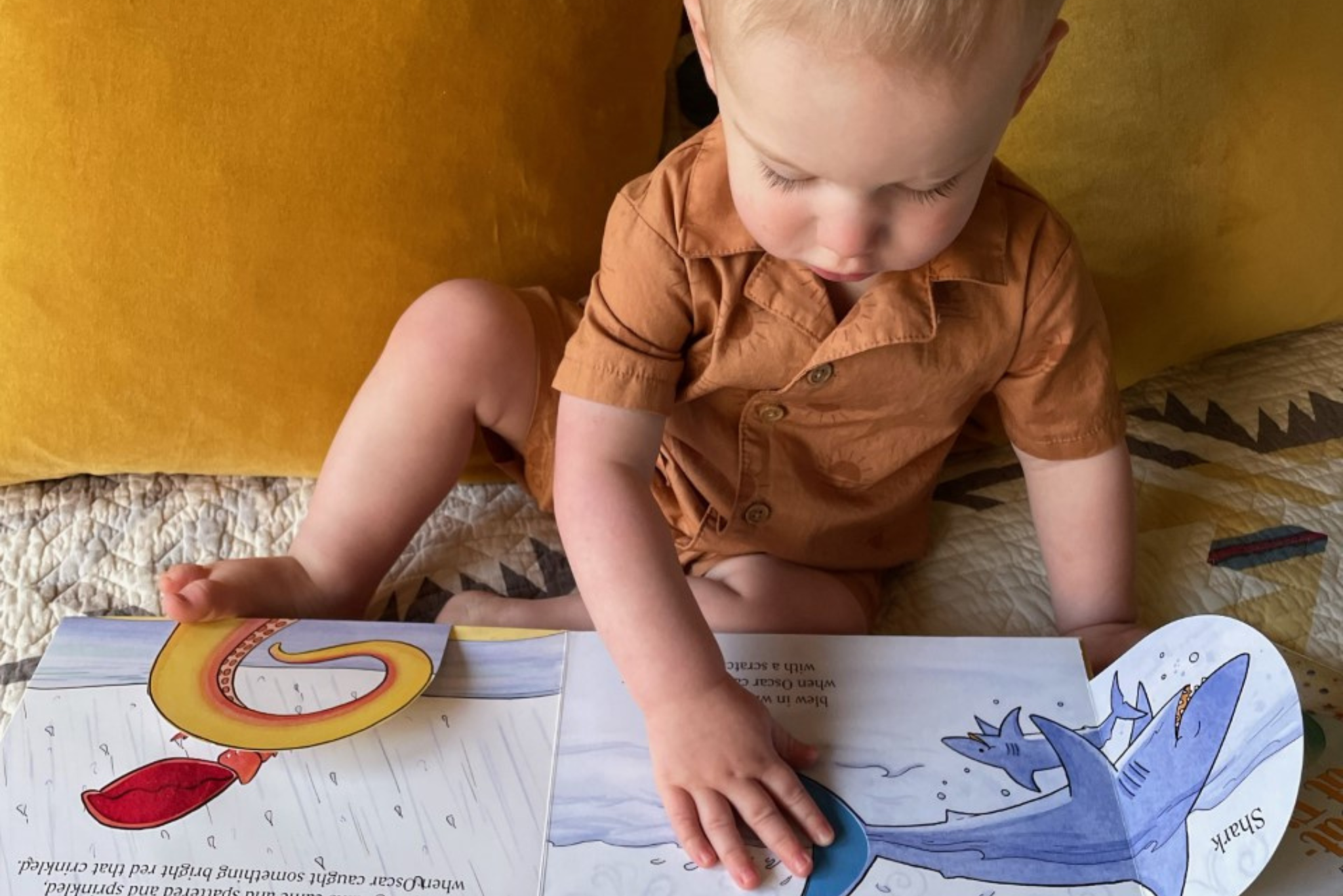Babies, Books, and Math Make Three
Paths to numeracy through books for infants and toddlers
By Judy Reinhartz
School is not the only place to learn math. Learning begins during the earliest days, weeks, and months of our lives. Infants and toddlers take in everything like sponges, even math. They are born explorers and problem solvers who are relentless in investigating their surroundings. It is during this process of exploration that the fundamentals for numeracy are laid, forming some of the building blocks to create a hierarchy of thoughts based on information gathered over time.
Each adventure embodies the mathematical ideas of counting, recognizing shapes and relationships, making comparisons, sorting and sequencing objects, and learning about the special number zero. These experiences make mathematical ideas visible and “come alive.” Meaningful math connections result when children rummage through kitchen cabinets and play with spoons, pots, containers, and covers, blurt out numbers in sequence or randomly, express quantities (more than, less than, and same as/equal to), or come up with totals without counting. Children are playing, but also learning math, unconcerned about getting the “correct” answer! Wow, how freeing.
Math is all around them. When dressing, “one arm, two arms;” walking up and down stairs, “one, two;” eating, “one spoonful of meat, vegetable, and/or fruit;” offering choices during story time; announcing that it is breakfast, lunch, or bedtime; setting the table with one plate, fork, cup; or even when saying “there is no more.” Math is present when children move and use their bodies, crawling across a room, taking “big” “small” steps, maneuvering around and through wide, narrow, curved spaces, hiding, and dancing with music. All these activities contribute to spatial awareness development while promoting logical reasoning and motor skills. So, let’s get moving!
Accompanying these ordinary activities with “interactive talk,” describing what children are doing and seeing, gives language to the web of math skills that they are experiencing. By intentionally mathematizing children’s encounters, their meaning-making capacity grows exponentially.
But learning math is incomplete without books. Their power lies in capitalizing on children’s natural inquisitiveness. Books invite readers and listeners to “mine” the math from stories about imaginary and fascinating places, characters, and situations that appeal to the five senses and sense of well-being. Books serve as robust math “talking starters” with their attention-grabbing illustrations and captivating repetitive dialogue that make sounds and math words and symbols fun.
Children are quick to chime in when numbers, symbols, and shapes are pointed out. Whether they are determining the total number of cupcakes, toys, and/or snacks, they are counting and when starting with the whole, “you have four,” and say the parts “one, two, three, four,” children are learning not only whole to parts and vise versa, but numbers in ascending and descending orders.


Let’s start our math-themed book hunt with Karen Katz’s adorable Counting Kisses book. She weaves counting into a story of a tired baby and the number of kisses she needs before saying good night. This interactive counting down from ten to one lift-flap book takes us on a kissing journey of a baby’s body, starting with her tiny ten toes, then chubby two knees, one belly button, and finally to the top of her head before falling asleep. With its lovely illustrations, Counting Kisses will be a hit with infants as the reader stops and points to the names and number of body parts kissed. There will be much giggling and laughter. This book is an excellent starting point for number sequencing in different settings as children play with toys, get ready to go out using a count of one, two, three, being pushed on swings, and/or going on scavenger hunts to identify a specific number of things under ten.
The love theme with math continues with More More More Said the Baby by Vera William, a Caldecott Honor book. It brings smiles to children’s faces as they chant “more more more” when listening to the three parallel stories of Little Guy, Little Pumpkin, and Little Bird. This colorfully illustrated book with its repetitive “catch and caught” sequences spark opportunities for children to be active listeners.
Other books that deserve a look are Teagan White’s sturdy cardboard Counting with Barefoot Critters that includes making pancakes, going camping, and swimming by the numbers; Hippos Go Berserk!: A Wild Counting Story by Sandra Boynton; and How do Dinosaurs Count to Ten? by Jane Yolen and Mark Teague.



And don’t miss Keith Baker’s Quack and Count; like Lois Ehler’s book Fish Eyes, it seamlessly connects counting with simple addition. Both take advantage of nature—the first placing the reader and listener in a lush green setting of vegetation, and the second in the deep blue sea swimming with intriguing-looking fish with different shapes and bursts of color.
The Icky Bug Counting Book by Jerry Pallotta is just in time for summer; the color palette is a sure pleaser for toddlers. What makes his book rather unique is that it starts with zero and goes to 26, and each page includes the number symbol and word and information about the insect and its history.
To round out the animal-themed math books, there is Eric Carle’s classic picture book, 10 Little Rubber Ducks, which is based on a true story of ten rubber ducks that fall overboard and end up on shores around the world. He imagines their voyages, complete with creatures they meet as they drift in the ocean. The book opens with an assembly-line of workers who paint the ducks that are loaded on a freighter, and during a storm … you guessed it. The book sets the stage for counting from one to ten, pointing out and naming odd and even numbers, and using directional words up/down, north/south, water/sky. You can water play in the bathtub and make ocean inspired crafts, beginning with sea creature counters made out of sponges that move on number lines to solve simple addition and subtraction problems. Happy sailing!



In this deceptively easy-to-read book, Ten Black Dots by Donald Crews kids are given opportunities to think about numbers in different ways. In effect, one to ten takes a back seat as the focus shifts to the simple narrative that accompanies each number. “What can you do with one dot, you can make a sun;” “with two dots you can make the eyes of a fox;” and “with ten dots you can make balloons.” Children hone their visual skills and use their creativity, all while learning the meaning of numbers and practicing counting.
Let’s see what Counting with – Contano con—Frida by Patty Rodriguez and Ariana Stein (has to offer. It is a bilingual book that is inspired by one Mexico’s most famous painters. It beautifully integrates art with math using a variety of colors, shapes, and paintings as a tribute to her.
The title of Round is a Tortilla: A Book of Shapes by Roseanne Greenfield Thong gives the story away. A feast for the eyes, this bilingual shape book offers a playful lesson featuring colorfully rich illustrations with a rhyming text. It is sure to bring bright smiles to everyone’s faces. So get cooking—measuring, pouring, stirring, and the good part, eating.



The last and perhaps one the best is Ten on a Twig by Lo Cole, a beautiful engaging interactive picture book for children to learn how to count as they watch birds take pieces of the twig with them as they fall when the book pages are turned for interested little hands. The charming die-cut pages of different sizes complete with tactile and repetitive phrases present counting in descending order and introduce subtraction in an unusual way. Turning the pages is one of the best parts of reading this book.
Well, our story Babies, Books and Math Make Three is at an end, but keep reading math-themed books and use mathematizing complementary activities as children play “peek-a-boo,” do finger play, sing songs, count when bounced gently on laps, and clap a beat.
Books celebrate and nurture children’s natural curiosity and sense of adventure, and remember math is everywhere. You only have to look for it to share it with your children. Just as early language and literacy are essential for lifelong success, so too is early numeracy through books.
Judy Reinhartz is a professor emeritus at the University of Texas at El Paso, a board member of the Santa Fe Alliance for Science and co-lead of its Adopt-A-School program, and lead for MathAmigos and director of its literacy and math coaching program. She is a retired elementary and secondary STEM educator. Reach her at jreinhartz@utep.edu.



